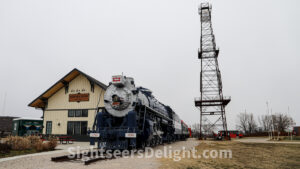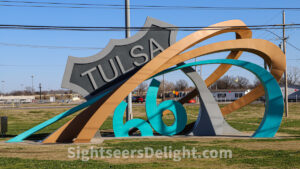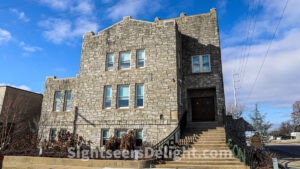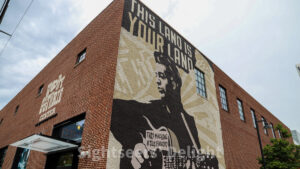Route 66 Historical Village is an open-air museum highlighting Tulsa’s oil, refining and transportation history. The Visitor’s Center replicates a 1920s Phillips 66 gas station, and the museum is also home to the tallest oil derrick in North America, a Pullman passenger car commissioned in 1929 and Frisco 4500, a 4-8-4 steam engine that pulled the the St. Louis-San Francisco Railway’s Meteor passenger train. In 1901, oil was discovered on former Creek land, which led to Tulsa becoming known as the “Oil Capital of the World,” and the derrick sits on the southeast corner of the Sue Bland No. 1 oil lease. The Route 66 Village was created as part of a partnership called Vision 2025, which, in part, aims to rebuild the Historic Route 66 Highway, through Tulsa County.
74107
Tulsa’s Route 66 Rising is an iconic sculpture celebrating the Mother Road’s history and impact on Tulsa. The 70-foot by 30-foot structure was dedicated in 2019 and sits along the Mother Road’s original 1926-1932 alignment. The artist behind this historic piece, Eric F. Garcia, was inspired by the Dust Bowl-era Depression and the Mother Road’s message of hope. Located inside the Cyrus Avery Traffic Circle, named after “The Father of Route 66.” It celebrates the contributions of Tulsan Cyrus Avery to Route 66.
74116
The Woody Guthrie Center, opened in 2013, is dedicated to spreading Woody Guthrie’s message of diversity, equality and justice to a new generation who can create their own ripples of change. The center honors Guthrie’s life and legacy by educating visitors, teachers, students and scholars about his relevance today and his important role in American history through on-site programming, classroom materials, youth music programs, artist-in-residence programs, school outreach, internships, fellowship opportunities and the Woody Guthrie Archives.
74103





